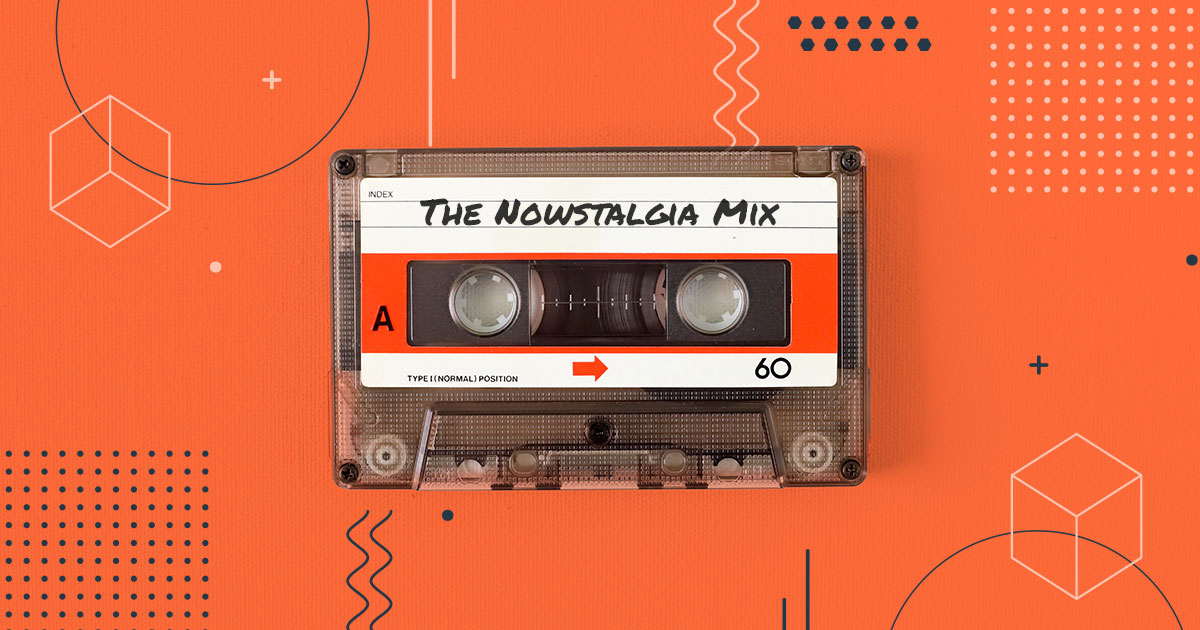Younger generations are feeling trapped in a state of arrested development, seeking comfort in times when social media and many of today’s global issues were seemingly non-existent. Similarly, traditional milestones, like buying a house or finding a job, have become harder to reach, especially with an uncertain economy and looming inflation lurking in the wings. In fact, a survey of young people 16 to 25 found that three-quarters revealed they were frightened of the future.
The Low Down on Nostalgia Marketing
Nostalgia marketing involves leveraging positive memories and emotions associated with the past to connect with consumers. Often, nostalgia marketing can restore and reinvent once-forgotten brands by reintroducing them to a new target audience with a more modern twist.
Over the years, we’ve seen some great examples of nostalgia marketing. In 2023, we bore witness to a few notable campaigns, including Silk’s Next Milk, a play on the iconic “Got Milk?” ads from the 90s—Mcdonald’s Grimace meal and shake combo—an ode to the iconic character’s birthday—and Walmart’s Black Friday campaign promoting the beloved cult classic, Mean Girls, ahead of the revival’s release.
We can’t forget the most popular and successful example of nostalgia marketing in 2023: Greta Gerwig’s Barbie movie. Barbie took the world by storm, reinventing what we all thought we knew about the iconic Mattel doll and causing the Copyright Office in the Library of Congress to register more than 2,000 Barbie-related works as a result of the movie’s success.
The Influence(rs) of Nostalgia Marketing
Brands aren’t the only ones fueled by nostalgia. Popular influencers are drawing the interest of large audiences by recreating relatable experiences that take us back to our childhood and teenage years.
In fact, some content creators completely rebranded, creating nostalgic content that sparks conversations their audiences love and relate to.
One of our favorites is TikToker Erin Miller (@overthemoonfaraway), a self-proclaimed 90s and 00s historian. With over 2.4 million followers, Erin’s videos transport her audience right back to the early 2000s, like going to the mall with friends or getting ready for a high school party. Other notable influencers include Kate Steinberg (@itskatesteinberg) and Mark (@snarkymarky), who also make relatable videos that bring us back to our childhood.
How to Nail Nostalgia Marketing
Want to dip your brand’s toes into this popular pool? Here are some best practices to keep in mind.
Understand Your Audience
Identify your target audience and understand the era or cultural references that resonate most with them. What memories does your target audience cherish?
In 2016, Adobe paid homage to beloved painter and instructor Bob Ross in their campaign “The Joy of Sketching: An Homage to Bob Ross.” This campaign nails understanding the target audience and their interests, while promoting a creative platform and referencing a creative icon.
Leverage Iconic Imagery
Find your brand’s iconic imagery or elements that relate to fond memories or shared experiences. Incorporating these in your marketing strategies can evoke strong emotions and connect your audience more deeply.
In 2022, Apple revived its iconic Silhouettes ad with help from Harry Styles to showcase the company’s new AirPods with spatial audio. The imagery is a nod to their older commercials in the early 2000s for products and services such as iTunes and the iPod.
Recreate Memorable Moments
Recreating memorable moments from popular films, books, TV shows, or songs provides familiarity for viewers who recognize the scene creates a strong emotional connection.
In a commercial from 2018 for Google’s home assistant, Macaulay Culkin recreates some of Home Alone’s most memorable scenes as Kevin McCallister.
Invest in Retro-Style Ads
Try vintage fonts, colors, and retro imagery that people associate with previous generations.
The 2023 SKIMS holiday campaign embraces nostalgia, reinventing winter aesthetics inspired by vintage magazine covers and apres-ski culture.
The Birth of ‘Nowstalgia’
One example of nowstalgia—the impulse to return to an imagined past by those who never experienced it in the first place—today is Gen Z’s interest in the 90s. Even though most of Gen Z was born in the 2000s, it’s about what the 90s represented for Gen Z. Many feel the era represents a carefree time of having fun. Nineties fashion, makeup, and music trends have come back in full force among Gen Z, and many brands have hopped on.
Netflix’s Stranger Things perfectly encapsulates nowstalgia. The show provides memories for the generation who knew the freedom and fun of this decade, like Generation X and senior Millennials. This show allows Gen Z to feel the same themes of the 80s, even though they never lived through it, and can identify with the cast, who are also Gen Z.
In 2021, TikTok launched the Re:Make campaign, partnering with a range of brands with classic and nostalgic ads, like Snickers, Skittles, and Old Spice. TikTok users were encouraged to provide their take on each, using the hashtag #TikTokReMake, which helped to promote engagement and got brands thinking about how creative approaches and trends can drive traffic for their promotions.

Tara Byrne
Tara is a part of the account team here at AGAIN Interactive. When she’s not helping clients achieve their digital marketing goals, she can be found shopping, reading, picking up an iced latte, or taking her dog for a walk.
